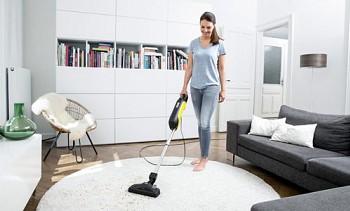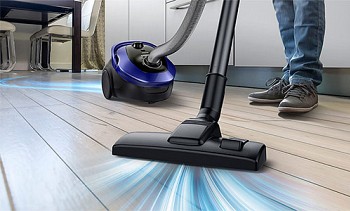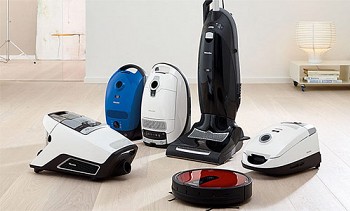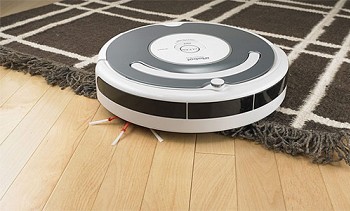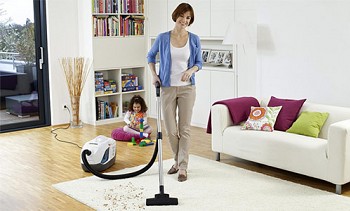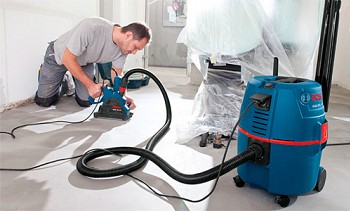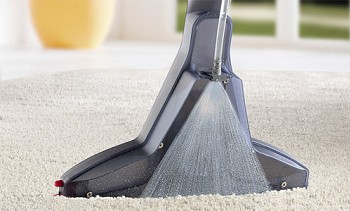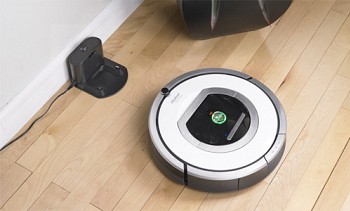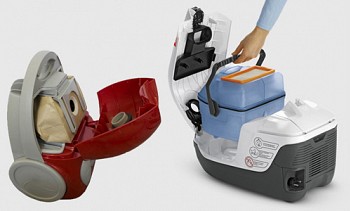How to choose the right vacuum cleaner - step by step instructions
Today you can not do without a vacuum cleaner - this purchase belongs to the category of priority. However, having come to the store, many are surprised to find that there are a huge number of models with various characteristics and functions. In this article we will tell you how to choose a vacuum cleaner that is right for you, and what parameters should be paid special attention to.
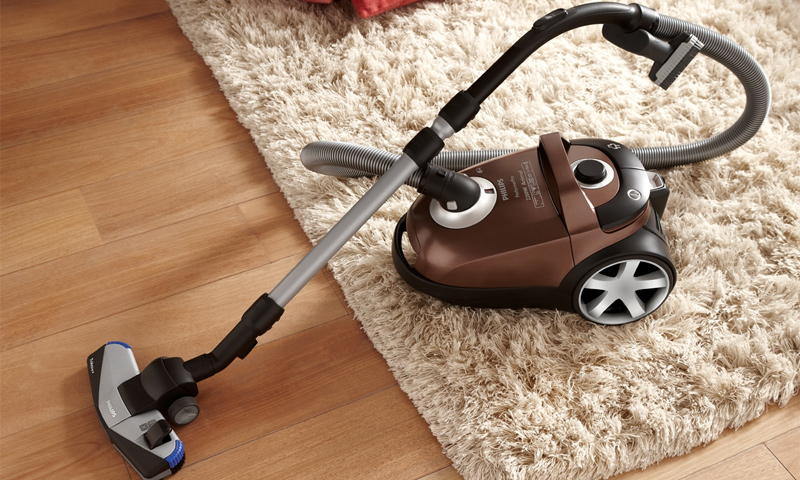
Content:
- Choose the type of cleaning supported by the vacuum cleaner and the dust bag used
- Optimum suction power
- Filter performance
- Vacuum cleaner control system
- Suction pipe - what should it be
- Nozzles: how much and what
- Permissible Noise Level
- What else to consider when choosing a vacuum cleaner
- Choosing a vacuum cleaner design
- Video: How to choose a vacuum cleaner
Choose the type of cleaning supported by the vacuum cleaner and the dust bag used
First you need to decide what kind of cleaning you need - traditional dry or wet, when using a vacuum cleaner you can wash the floor coverings. In the latter case, it is called "washing." Dry cleaning devices, in turn, are also divided into several varieties. For example, they may differ in the way they collect garbage - in a bag, in a special removable container, and some models are equipped with water filters (aquafilters).
Dry Vacuum Cleaners
1.Models with dust bags. Such devices are found in the store most often. They are not very expensive, and it’s quite convenient to use them. Consumers especially like disposable paper bags that can be removed and thrown away with garbage without breathing dust. Fabric bags can be used repeatedly, but this requires occasional shaking.
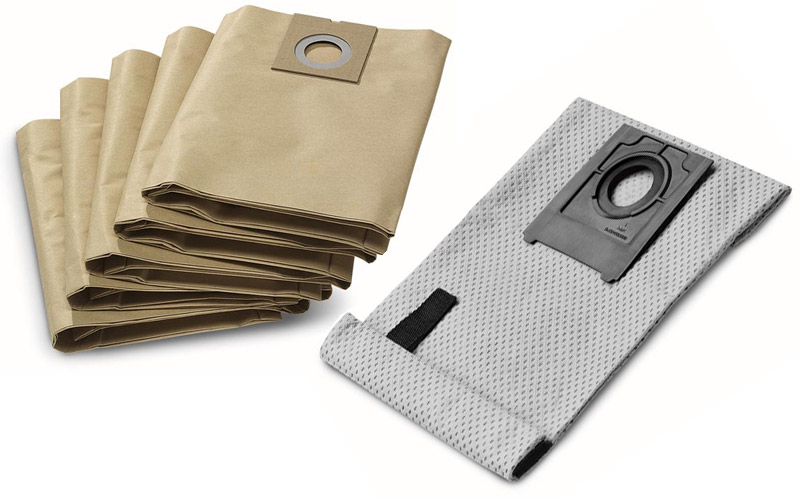
When buying a new vacuum cleaner, we usually get one fabric bag and several paper bags.
When disposable paper products run out, you will need to buy new ones - you have to pay for convenience. This means that you will have to not only part with a certain amount (albeit a small one), but also sacrifice part of your free time to search for bags. And sometimes, going after them to the store, you may not find the right size for sale. However, it is quite possible to get by with a fabric bag that will last for years without requiring replacement. But inhaling dust when shaking it is very unpleasant, and even harmful to those who are prone to allergies.
A vacuum cleaner with a dust bag is driven by an electric motor that starts the fan. Due to this, a rarefied atmosphere is created in the camera built into the device. There, dust enters, passing from the brush of the vacuum cleaner through the hose and suction pipe to the inlet of the chamber. Once there, the air along with the trash is inside the dust bag, after which the trash settles in the bag. Dirty air passes through a filter system, where it gets rid of impurities. Purified air enters the room through the outlet of the device.
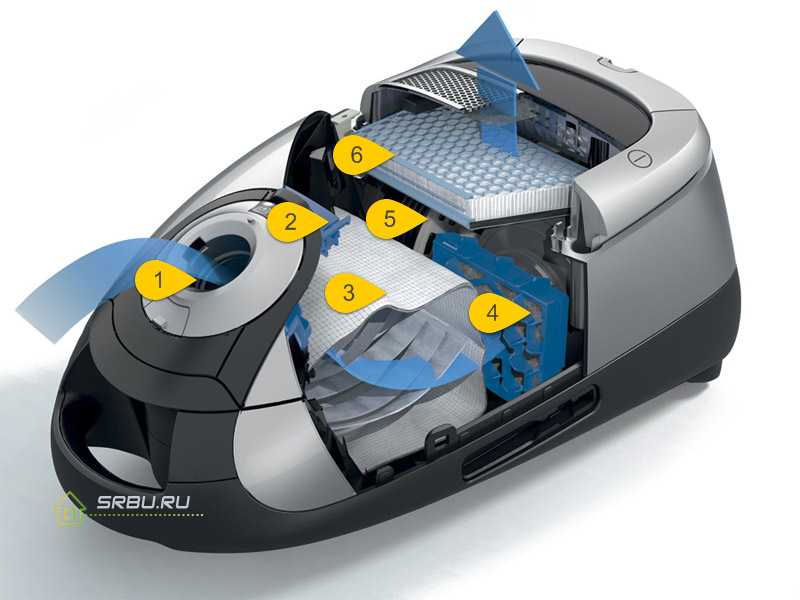
1. Air intake, dirty air with dust and debris enters here; 2. Bag holder; 3. A disposable or reusable bag in which the bulk of the garbage settles; 4. The engine filter, prevents the engine from strong dusting; 5. The engine; 6. Fine filter, type HEPA.
2.Bagless models. Such vacuum cleaners use cyclone type systems. The British engineer John Dyson first developed a similar device. The essence of his work is as follows: the air drawn in, mixed with dust, enters a special cone-shaped tank. There, the air masses move along a spiral trajectory, passing the path from the base of the cone to its apex. They rotate faster and faster, and dust particles, attracted by centrifugal force, are pressed against the walls of the tank.Having stopped, they no longer hold on to anything and fall down to the bottom of the container.
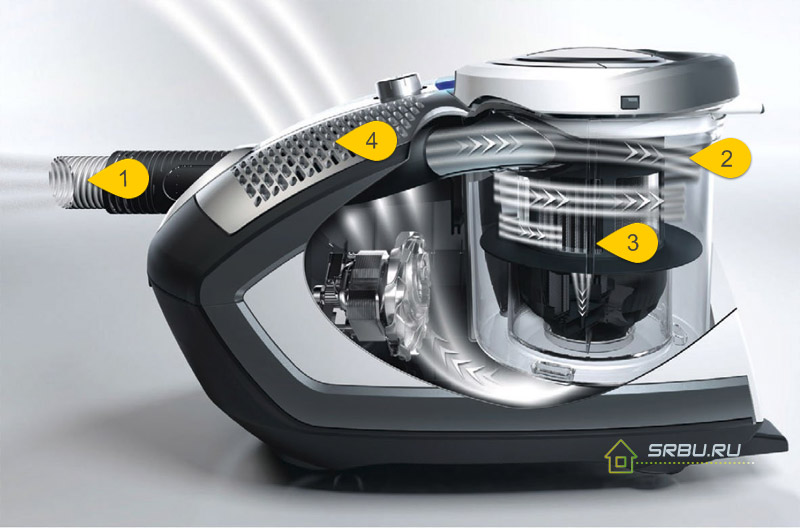
1. Incoming air flow with dust; 2. Separation of large particles of garbage; 3. Filtration of fine dust particles; 4. Air filtration using a HEPA filter.
Today's models of this type use the principle of "double cyclone", which also invented Dyson. Moreover, for larger dust particles, an external cyclone is used, where the air moves in a spiral. Most of the debris remains on the separation plate, which is on the way to the inner cyclone. There is the removal of smaller dust particles. Thanks to the transparent walls of the container, you can admire this process by observing how dusty vortices fly up.
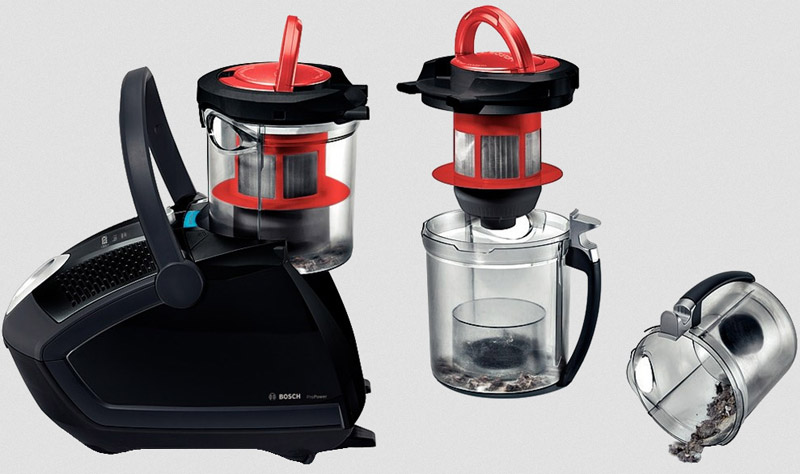
After work, the container is emptied by simply shaking out the trash. Rinsing the container periodically is recommended.
Many, deciding how to choose a vacuum cleaner for the home, stop on cyclone models. After all, when they fill the dust container, the suction force does not decrease. This compares them favorably with devices equipped with dust bags. When such a bag fills, the draft of the vacuum cleaner noticeably weakens.
However, the cyclone method is not without drawbacks. So, by shaking the container, a person inevitably comes into contact with dust. In addition, the cleaned air coming back is not filtered perfectly - about 97 percent of the dust is retained. However, modern HEPA filters, which serve for additional air purification, reduce the second drawback to nothing. Using such a vacuum cleaner, cyclone destruction must not be allowed. It can be destroyed by reducing the flow of air. For example, this can happen at the moment when the cleaned carpet or any other object adhered to the brush of the vacuum cleaner.
3.Aquafilter Models. In these vacuum cleaners, water poured into a special filter fights dust. During cleaning, dirty air flows through the suction pipe and hose. The air supply pressure is high, and it immediately mixes with water, forming a mass of bubbles. At the same time, large dust particles quickly sink, and small ones "hide" in air bubbles. To remove them, additional filters are used.
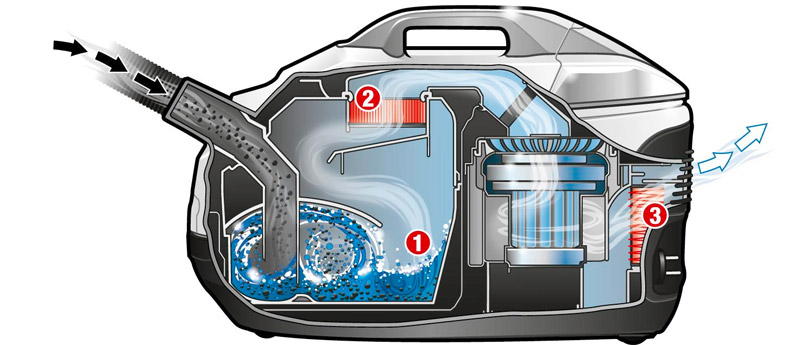
1. The main filtration takes place in a water bath; 2. Intermediate filter - filters out small particles of dust that escaped from the water; 3. HEPA filter that traps the smallest particles.
Such devices are good in that their suction force is constant. And emptying the dust bag is easy enough - you just need to remove the water filter and pour the contaminated liquid into the sewer. And models with an aquafilter help create a comfortable microclimate. After filtering, they give back clean, fresh and moistened air.
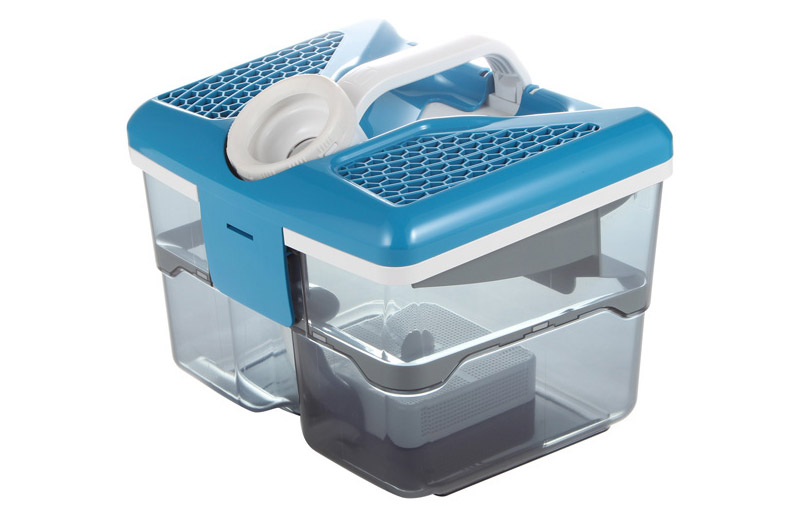
But we must remember that the container of such a vacuum cleaner requires not only shaking, but also regular (after each cleaning) washing. But sometimes it may not be time or desire.
In addition, for a device with an aquafilter, more space is needed than for a conventional vacuum cleaner, since its dimensions are more solid. Therefore, before buying, you must first think about where the device will be stored. And buying such a vacuum cleaner as a gift to an elderly person, it is worth asking if he needs it. Perhaps grandmother would prefer a classic compact model with a bag, which does not need to be washed every time.
Despite all the technical improvements and improvements, in the process of using a vacuum cleaner with a container or an aquafilter, a number of disadvantages may appear that may lead to the refusal to use it. Knowing this, smart manufacturers produce models in which you can use both a container or an aquafilter and a bag to collect dust.
Wet Vacuum Cleaners
These devices can be cleaned both dry and wet. In the latter case, water is sprayed on the floor, and then sucked into the vacuum cleaner. This ability can help out when you need to quickly collect spilled puddles from the floor. It is very convenient to clean carpets, tiles, masonry with such a vacuum cleaner.And wearing a special nozzle, you can wash the window panes to shine. If you choose a household washing vacuum cleaner, we will get a higher quality of cleaning. It is enough to use it once a week, achieving the same cleanliness as when using a “dry” vacuum cleaner every other day.
In addition to washing various surfaces, these devices can:
- remove large debris (even wet);
- moisturize, purify and flavor the air;
- clean the blockage in the bathtub or sink.
Now about the cons. The price for models with a washing function is two or even three times higher than for those that can be cleaned only in a dry way. In addition, not all furniture will like wet cleaning. Do not tolerate such treatment and carpets with natural pile, and noble parquet. For a fragile woman or child, cleaning with such vacuum cleaners will be difficult - it is large and heavy. And after each cleaning, the device must be disassembled, washed and dried. His energy consumption is quite large, as is the consumption of detergent. By the way, when cleaning the carpet, most of this product remains on it, leaving the vacuum cleaner forever.
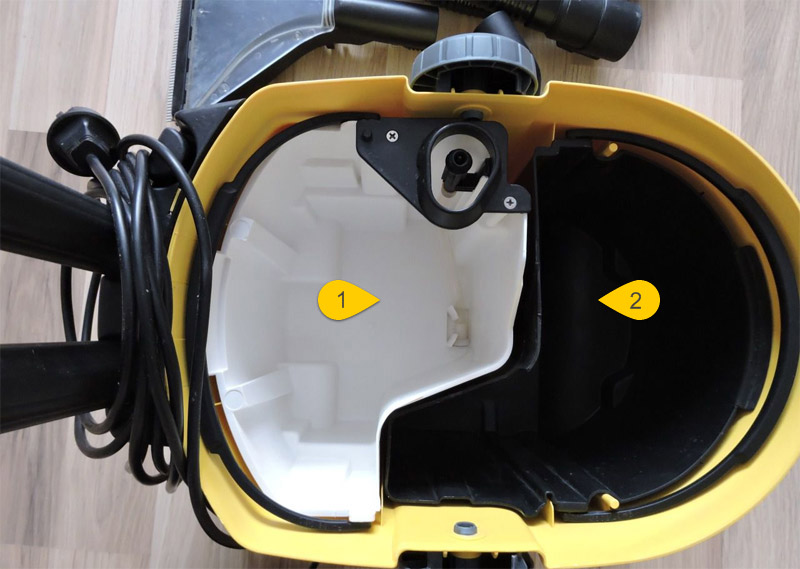
Each such device has two containers - 1. for clean water with detergent and 2. for dirty water.
From the first tank, the composition is fed through a hose to special nozzles, spraying over their entire surface. Waste fluid enters the second tank in suction mode. The supply of clean water can be adjusted independently.
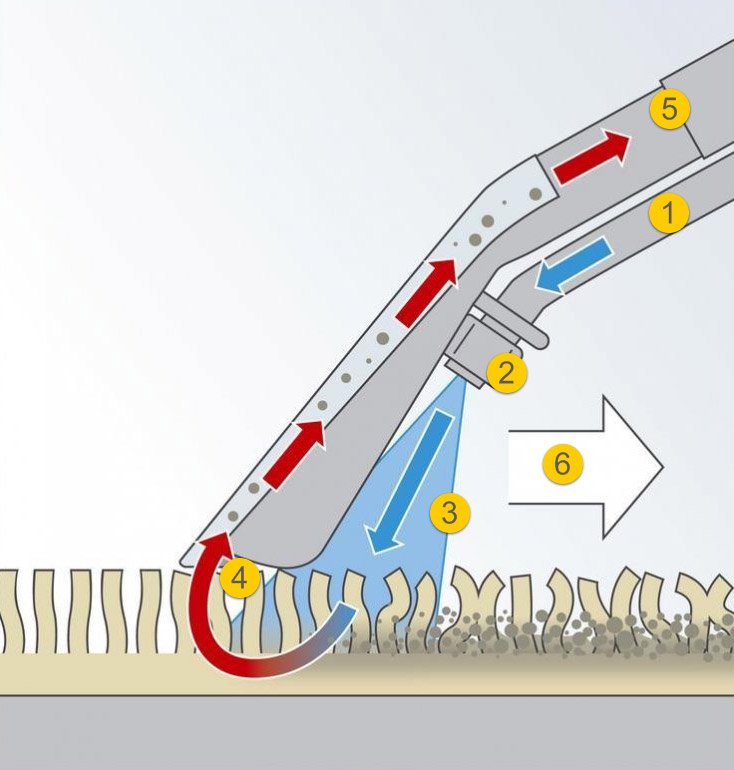
1. Clean detergent solution. 2. Sprayer. 3. Spraying the cleaning solution. 4. Suction of dirt. 5. Collected dirt is transported to a special container. 6. The direction of movement of the brush.
Those who are interested in washing vacuum cleaners can be advised to read more about them - a separate material is devoted to them (link at the bottom of this article). And we will continue the conversation about the parameters that you need to pay attention to when choosing a vacuum cleaner.
Optimum suction power
It is this characteristic that is determining when comparing similar models. Naturally, it is better to dwell on one in which the suction power is of greater importance. After all, this indicates a more efficient operation of the vacuum cleaner - which means that the apartment will be cleaned faster and cleaner.
Just do not confuse power consumption with suction power. This is usually indicated on the body of the vacuum cleaner in large numbers and is calculated in thousands of watts. So, you can often see these values: 1200, 1800, 2000, 1500 watts.
This information indicates how much electricity this model consumes. The suction power on the case is either written in small print, or not at all. Then you need to look into the technical passport of the device and look for information there.
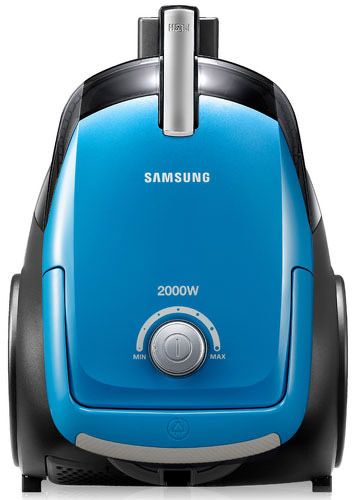
The problem is that so far no standard has been devised for vacuum cleaners by which suction power is measured. As, for example, the class of washing or spin in washing machines, which has long led to a common world denominator. Therefore, different manufacturers report suction power in different ways. For example, some of them began to measure this parameter in aerowatts. This unit came from the English system of measures and is not standardized on a global scale. So another part of the manufacturers indicates the suction power simply in watts.
Typically, decent manufacturers always indicate two values for this characteristic: maximum and nominal. This helps the user to choose the right vacuum cleaner according to parameters. The thing is that the maximum suction power takes place in the first few minutes after switching on, and the rated power takes place after 5 - 10 minutes. Well, when these values differ by 14-16 percent, not more.
If this indicator lies in the range from 300 to 350 watts, then the vacuum cleaner will cope with tiles, linoleum and short-pile carpet. For owners of large apartments, pets or long-pile carpets, models with a suction power of 350 to 500 watts can be advised.A particularly good combination is low power consumption plus high suction power. This means that the model belongs to the upper class.
Filter performance
To remove as much as possible percentage of particles of dirt and dust from the air, it must be carefully filtered. Some elite-class vacuum cleaners are equipped with ten to twelve filters. This is usually just another marketing ploy. Let's analyze the filtering system in more detail. When air, along with debris and dust, is sucked into the vacuum cleaner, it enters one of three devices: a bag, an aquafilter or a container. The largest dust particles settle there, and the smallest continue along with the air, reaching the pre-motor filter. It protects the motor from dust. Air moves further and reaches the output filters.
Most often, electrostatic type microfilters, S filters and fine filters - HEPA filters are used at the output. The name of the latter is an abbreviation that stands for "High Efficiency Particutate Air". If you translate this phrase, we get "highly effective air purification." Dust microparticles that can catch output filters can have a size of 0.3 microns. Different filter models may have varying degrees of efficiency and durability.
The HEPA filter is a kind of accordion composed of a special fiber material with a fiber diameter of 0.65 to 6.5 microns. Disposable filters are made of fiberglass and paper, and reusable filters are made of fluoroplastic. Fluoroplastic products require periodic washing - under this condition, you can use them for a very long time, as much as with the vacuum cleaner itself. The efficiency of the HEPA filter is determined by the European standard - the norm of EN 1822. Next - more on models of the HEPA type.
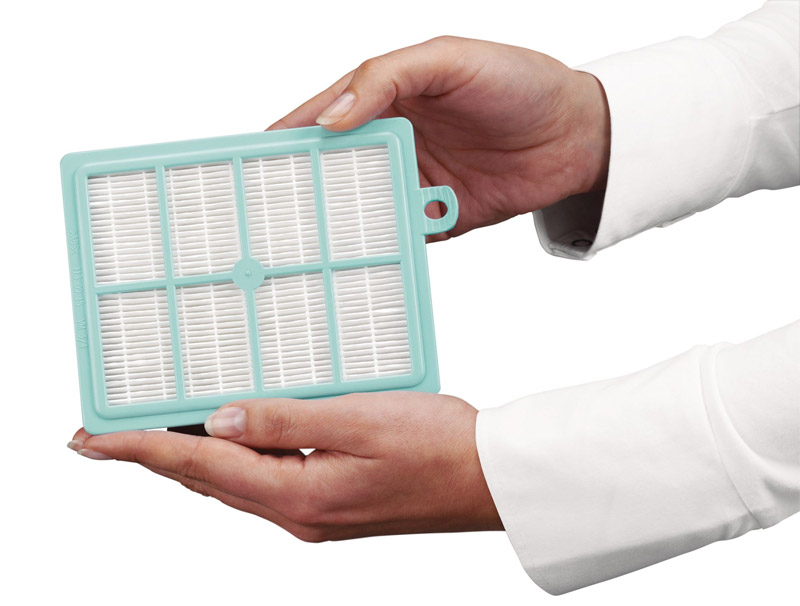
One embodiment of the HEPA filter.
Vacuum cleaners manufactured today are usually equipped with HEPA H 13 or HEPA H 12, HEPA H 11 filters. It is much less common to find devices where HEPA H 10 is used. The number indicated at the end determines the degree of air purification. The greater its value, the more efficient the filter system. At the same time, the cost of a vacuum cleaner increases. But those who suffer from asthma and allergies should not save on their own health. Experts know how to choose a good vacuum cleaner for this category of people - these are models where HEPA H 13 filters or higher are installed. They will not only remove all dust (even the smallest) from the air, but also tobacco smoke and plant pollen.
When buying a vacuum cleaner, you need to keep in mind that filters for fine cleaning are not included in all models. Often they need to be purchased separately. Several types of HEPA filters are on sale - they are both reusable and replaceable.
| Filter Name and Labeling | The percentage of particles removed,% |
|---|---|
| HEPA H 10 | 85 |
| HEPA H 11 | 95 |
| HEPA N 12 | 99,5 |
| HEPA H 13 | 99,95 |
| HEPA H 14 | 99,995 |
| HEPA (ULPA) H 15 | 99,9995 |
| HEPA (ULPA) H 16 | 99,99995 |
It is worth mentioning about S filters - devices of an even higher level of purification. Their degree of capture of allergens and fine dust is 99.97 percent. They can also be replaceable or reusable. They require flushing or replacement only once a year.
Vacuum cleaner control system
In this case, we are talking about a system that turns on the vacuum cleaner, turns it off and regulates the suction power. Usually, buttons on the handset or a lever on the control panel or housing are used for this. Vacuum control can be electronic or mechanical.
1.Mechanical system. Mechanical system - a rotator or slide switch located on the device body. With its help, power is regulated. Such a system has some disadvantages. When cleaning, changing the power, you have to bend to the body of the device, and the possibility of its adjustment is limited to fixed values.
2.Electronic system. The electronic system is a rheostatic type regulator that allows you to smoothly change the power, similar to how the sound in the radio is regulated.The regulator is located either on the body or on the tube of the vacuum cleaner. Some models also have a liquid crystal display that shows the power value, as well as other operating parameters. In general, using devices with an electronic system is much more convenient than using a mechanical one. In addition, they are less energy intensive.
According to the principle of action, the following types of control of vacuum cleaners are distinguished:
- Wire management assumes the presence of wires going from the body to the tube through the hose. The reliability of this method is quite high, but the wires greatly make the vacuum cleaner hose heavier. It becomes not very comfortable to work.
- Infrared control is no less reliable than the previous one, but the hose remains light at the same time. This system works in the same way as a conventional remote control.
- Radio control is one of the best ways. Its reliability is the highest. The only negative is that models with this control are very expensive.
Some modern vacuum cleaners are equipped with a useful function - the power in them is automatically regulated, according to the type of surface being treated. For example, if you have to clean a smooth floor, clean books or furniture, then suction power from 250 to 300 aerowatts is enough. Well, pile coatings will require an increase in suction power up to the limits of 300-400 aerowatts.
Suction pipe - what should it be
In the design of the vacuum cleaner, this part plays an important role. Some time ago, many models with plastic pipes were sold, and similar devices are still found (but rarely). Not knowing how to choose the right vacuum cleaner, follow the advice of professionals - they do not recommend buying appliances with a suction pipe made of plastic. If it is made of metal, it will last much longer.
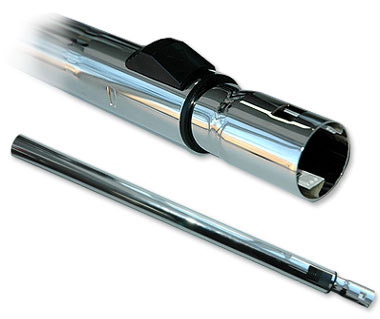
Structurally, the pipe can be solid or collapsible, connected from two tubes inserted one into the other.
Often you can find suction pipes of a telescopic type (in the image). They can be extended to the desired length, like a fishing rod, locking in this position. It is very convenient, and the most “cool” models of vacuum cleaners are distinguished by this feature.
Nozzles: how much and what
To the vacuum cleaner turned into a universal device for cleaning any of the surfaces, a variety of nozzles are used. They will allow you to equally well cope with cleaning a smooth floor and long pile carpet, velvet curtains and upholstered furniture. Usually in the standard kit there are 3 or 5 different nozzles.
Consider the main ones:
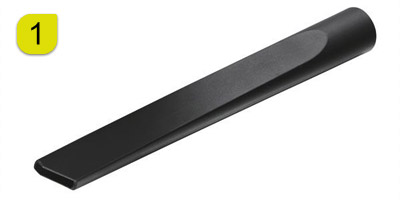
The slotted nozzle is a flattened tube having a narrow slit at the end. It comes complete with any vacuum cleaner. Helps to cope with dust inside and behind batteries, as well as along baseboards.
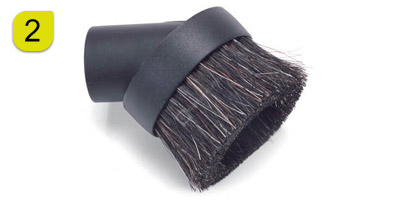
Round brush with a long pile. It is convenient to clean books, as well as carved furniture and other products with a complex surface.
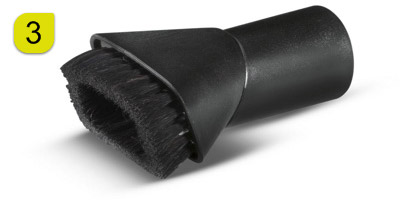
The oval stiff brush is equipped with a short pile. It is used for cleaning carpets, heavy curtains, and upholstered furniture hanging on the walls.
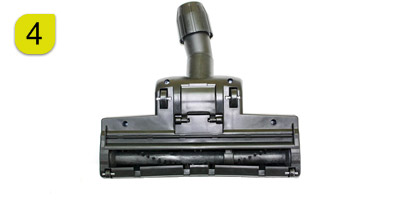
Turbo brush is useful for owners of cats, dogs and other pets. She copes well with wool, removing it from upholstered furniture and carpets (this also applies to hair). And for needlewomen it will not be superfluous, cleverly collecting threads from the floor. And in the summer, a turbo brush will successfully fight against poplar fluff.
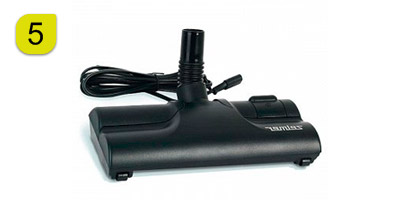
An electric brush is an electric turbo brush. It has all the advantages of the previous nozzle, but it works much quieter, as it rotates by electric current. She also has a minus - due to the wires connected from the housing of the device, it makes the pipe heavier. Like a conventional turbo brush, it cannot be used for carpets where the pile is longer than one and a half centimeters.
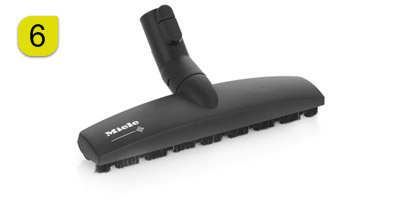
A natural bristle brush is needed for processing “noble” and expensive coatings whose surface is smooth. These are parquet, granite, stone (artificial and natural), laminate. Natural bristles will not scratch the coating, effectively cleaning it.
Permissible Noise Level
And this is also important - a too “loud” device acts on the nerves and causes a headache.Therefore, we pay attention to the number of decibels indicated in the passport.
On March 12, 2002, a convention was adopted in Brussels declaring the noise level of various devices. This document is signed by representatives of many well-known brands that produce vacuum cleaners. In particular, we can name the companies familiar to everyone: Miele, Philips, Rowenta, LG, Bosch, Electrolux. The Convention determined that vacuum cleaners should be tested by the manufacturer with the engine turned on at maximum power.
Measurements are made as follows. The finished device is plugged into an electrical outlet, and a microphone is placed 30-50 centimeters from it. In addition, you need a device that measures the noise level and a leading recording. Tests are carried out 2 or 3 times (until the noise level becomes constant). So check every vacuum cleaner. Even if only 7 percent of the entire party is “louder” than the remaining 93 percent, they still declare the maximum noise level.
Modern models of vacuum cleaners should not make noise louder than 80 decibels. As an example, when a person whispers, he makes a noise of the order of 40 decibels. In stores, there are mainly models with a noise level of 70 decibels, and even 60-65 decibels. Cyclonic-type vacuum cleaners are most noisy - much stronger than models with dust bags.
What else to consider when choosing a vacuum cleaner
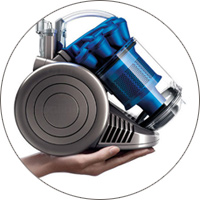 |
The weight of the device can range from 4 (for compact models) to 5-6 kilograms (for full-size models). The latter are most convenient for regular use. A reduction in weight and size is usually the result of savings on the volume of the dust container. |
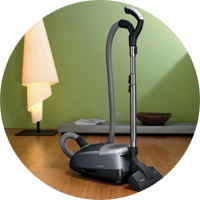 |
The type of parking (storage) can be horizontal or vertical. Horizontal parking does not change the natural working position of the vacuum cleaner. Vertical parking means that the device is placed on the front side where the network socket is located. In this case, it becomes possible to mount the tube vertically on the body. As a result, the storage area of the device is significantly saved. |
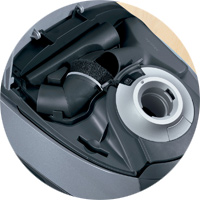 |
The nozzle compartment located on the housing helps not to lose any of them, as well as quickly get the right one. Some manufacturers provide a storage space on the handle, where the nozzles are fixed on a special panel. During operation, this panel is removed and put on again after cleaning. But user reviews say that keeping nozzles this way is extremely inconvenient. Cleaning is delayed and complicated. |
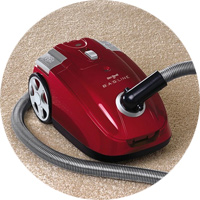 |
Overheat protection is a must. If it is not there, then the engine warmed up to a critical state can break. The device heats up for various reasons - most often due to the fact that the dust collector is filled “to the eyeballs”. Another cause of overheating can be a blockage when air cannot flow through a hose or pipe. Almost all today's vacuum cleaners have automatic shutdown when exceeding the permissible temperature. So they can be used safely. |
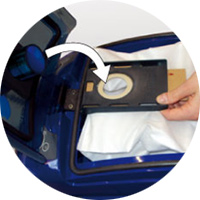 |
You will need a false start lock if you accidentally forget to insert a dust bag after you last cleaned it. The lock will warn you of forgetfulness and the device will not turn on. |
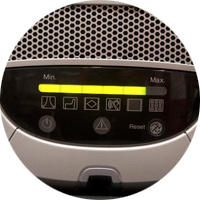 |
Indicators monitor the condition of the vacuum cleaner and its performance. If they are not available, you will have to periodically open the case and visually check whether everything is in order. The device can be equipped with: an overheat indicator - if automatic shutdown is not provided when the thermal limit is exceeded; an indicator of contamination of the filter, indicating the need to replace or clean the filter device; dust collector indicator. |
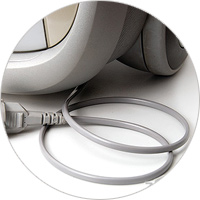 |
The length of the electric cord determines the mobility of the vacuum cleaner away from the power outlet, and the length of the hose determines its radius of action. Modern appliances usually have the function of automatically winding the cord, and sometimes it is complemented by the ability to auto-reverse. That is, the unwinding of the cord occurs when the vacuum cleaner is removed from the outlet, and when moving in the opposite direction, the cord is automatically unwound. |
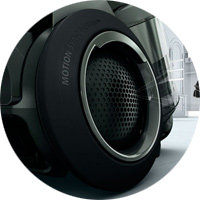 |
The wheels of the device 90% determine its maneuverability.If they are fixed from the sides of the case, then movement is possible only along a straight path. Another thing is when the wheels are fixed on the bottom - while the vacuum cleaner has the opportunity to move in any direction and deftly bend around corners. Plastic wheels are not very practical - sometimes they scratch the floor. It is better to choose models where the wheels are rubberized. |
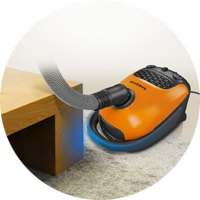 |
Another convenient thing is a protective soft bumper, enveloping the entire perimeter of the vacuum cleaner. It will protect furniture and corners from room bumps. |
Choosing a vacuum cleaner design
There are four options for the design of vacuum cleaners. This should be known in order to understand how to choose a vacuum cleaner for an apartment or house. The types of appliances can be as follows: balloon, vertical, manual, and a mop type vacuum cleaner.
Cylinder type vacuum cleaners
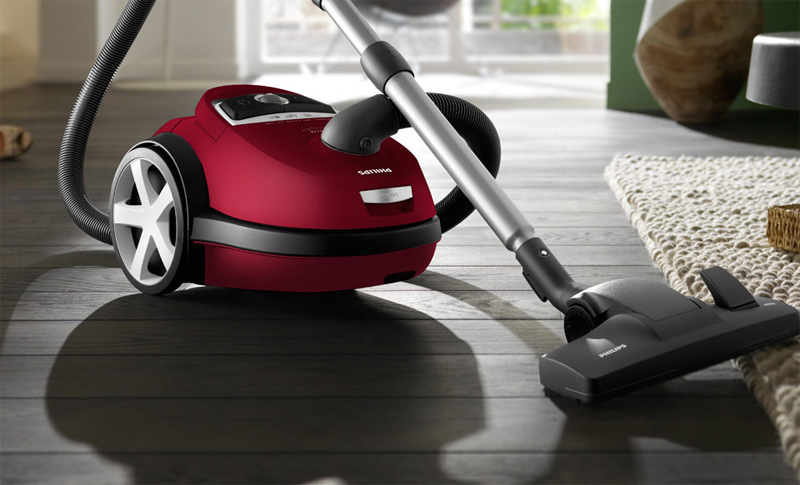
These devices have the following main features:
- Cleaning of horizontal and vertical planes, including bookshelves, stairs and carpets hanging on the wall.
- Cleaning hard floors and carpet (except for some models) coatings. For carpets, a special brush nozzle is included.
- Standard complete set: the soaking-up tube, a nozzle brush for a floor, a nozzle of slot-hole type, a nozzle for upholstered furniture.
- A device for automatically winding the cord.
Additionally, there may be:
- fine filters (HEPA filters);
- special brush for hard to reach places;
- extended cord;
- long suction pipe.
Vertical Type Vacuum Cleaner
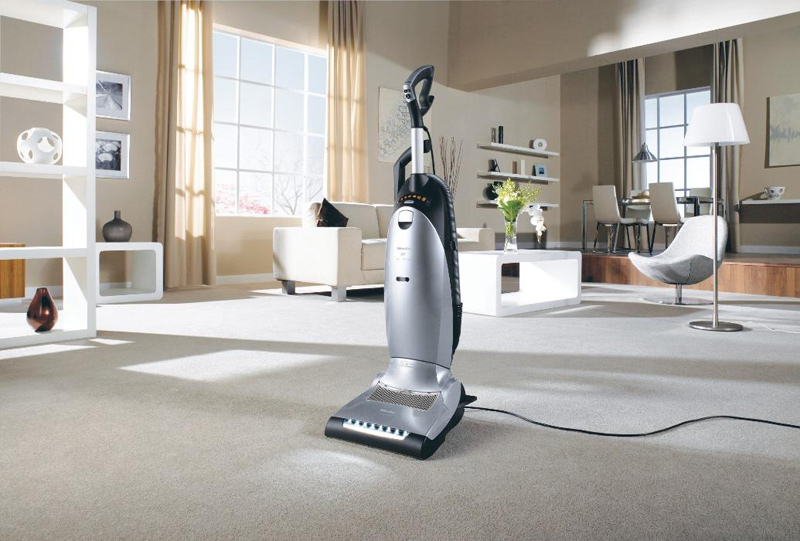
Key features:
- There are rollers and hinges that increase maneuverability.
- The brush is equipped with a bumper that protects the walls and furniture.
- The depth of carpet cleaning is adjustable.
- There is a backlight.
- The brush moves automatically.
Additionally:
- the presence on the brush of the switch from hard coating to carpets;
- HEPA filters;
- tube-nozzle on the suction tube for cleaning curtains and chandeliers;
- elongated cord and its automatic reeling;
- elongated suction pipe;
- touch sensor of the level of pollution regulating suction power;
- nozzle for hard to reach places;
- dust collector indicator;
- system of protection of the electric motor against hit of coins, pieces of paper and other garbage.
Mop type vacuum cleaners
Such a device is the best suited for small rooms where the flooring is hard. Those who cannot afford to operate bulky and heavy devices of standard sizes will especially appreciate it. With this device you can at least every day to clean the floor or carpets, clean the stairs and rugs.
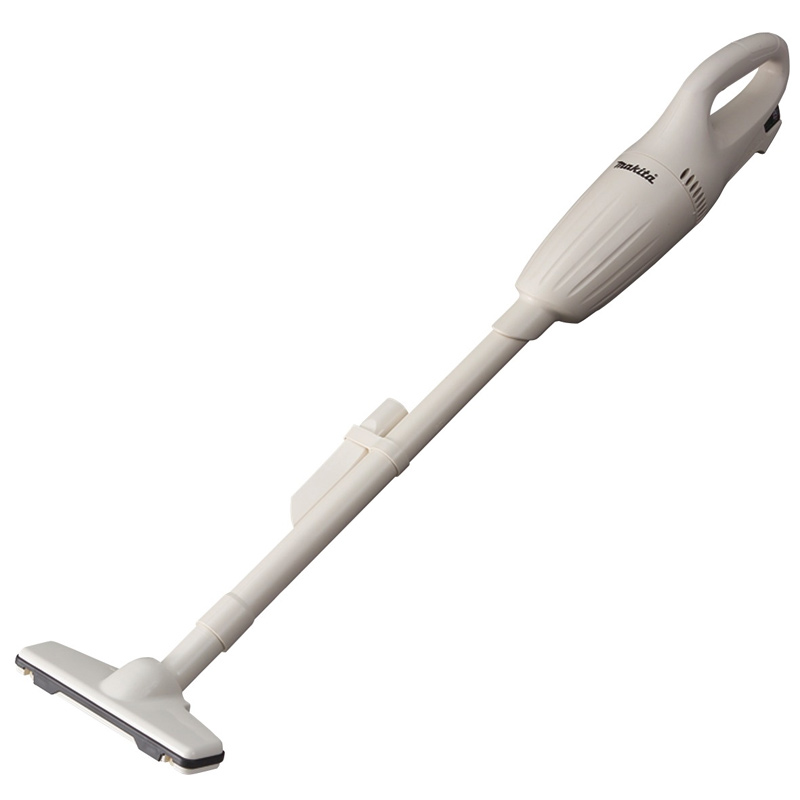
The vacuum cleaner mop has the following advantages:
- ease of storage, compactness, low weight;
- lack of noise during the work;
- instead of a bag, a convenient container is used;
- there are models that do not have an electric cord;
Hand Type Vacuum Cleaner
These small devices can quickly and easily remove small debris. Depending on the modification, they can operate on mains or battery.
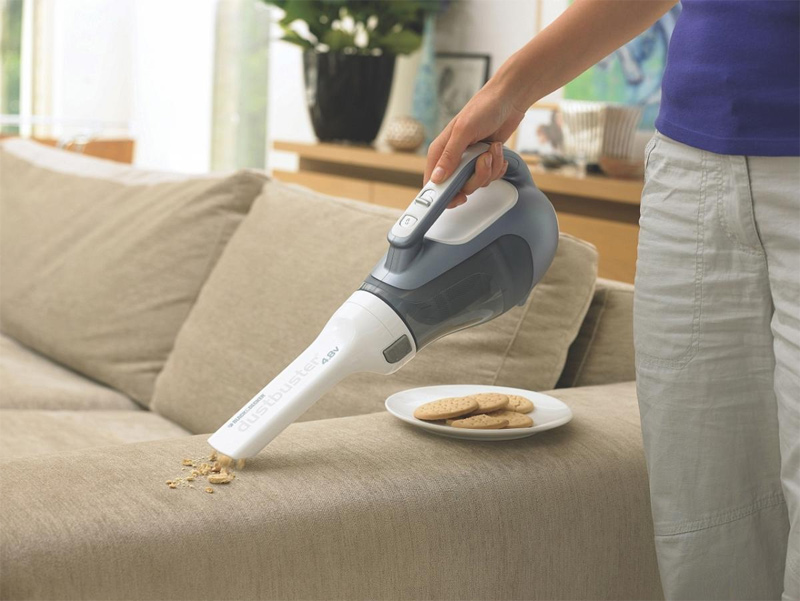
Main parameters:
- Light weight and dimensions;
- Plastic container dust collector;
- Possibility of cleaning vertical surfaces.
Additionally (for some models):
- elongated brush nozzle;
- brush for upholstered furniture;
- a brush for cleaning stains and spilled liquids from carpets and furniture;
- start key lock.

